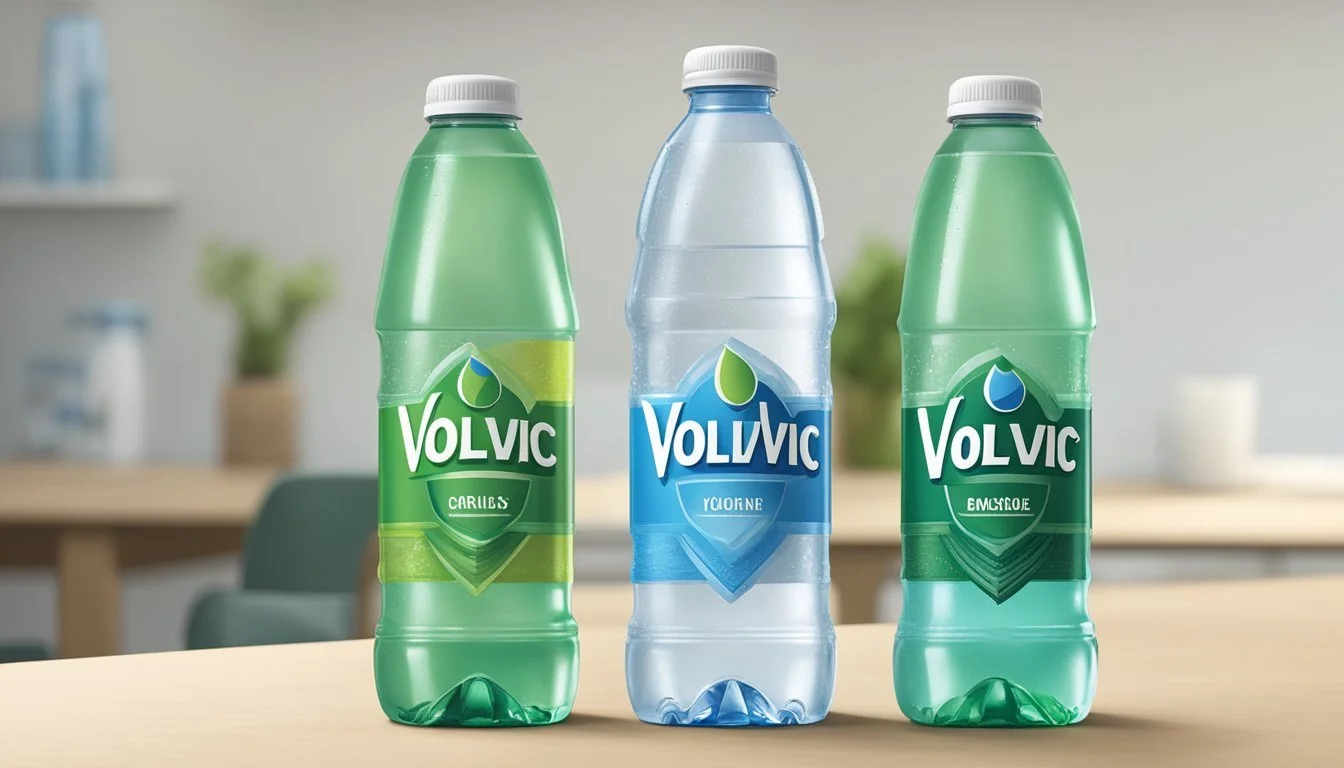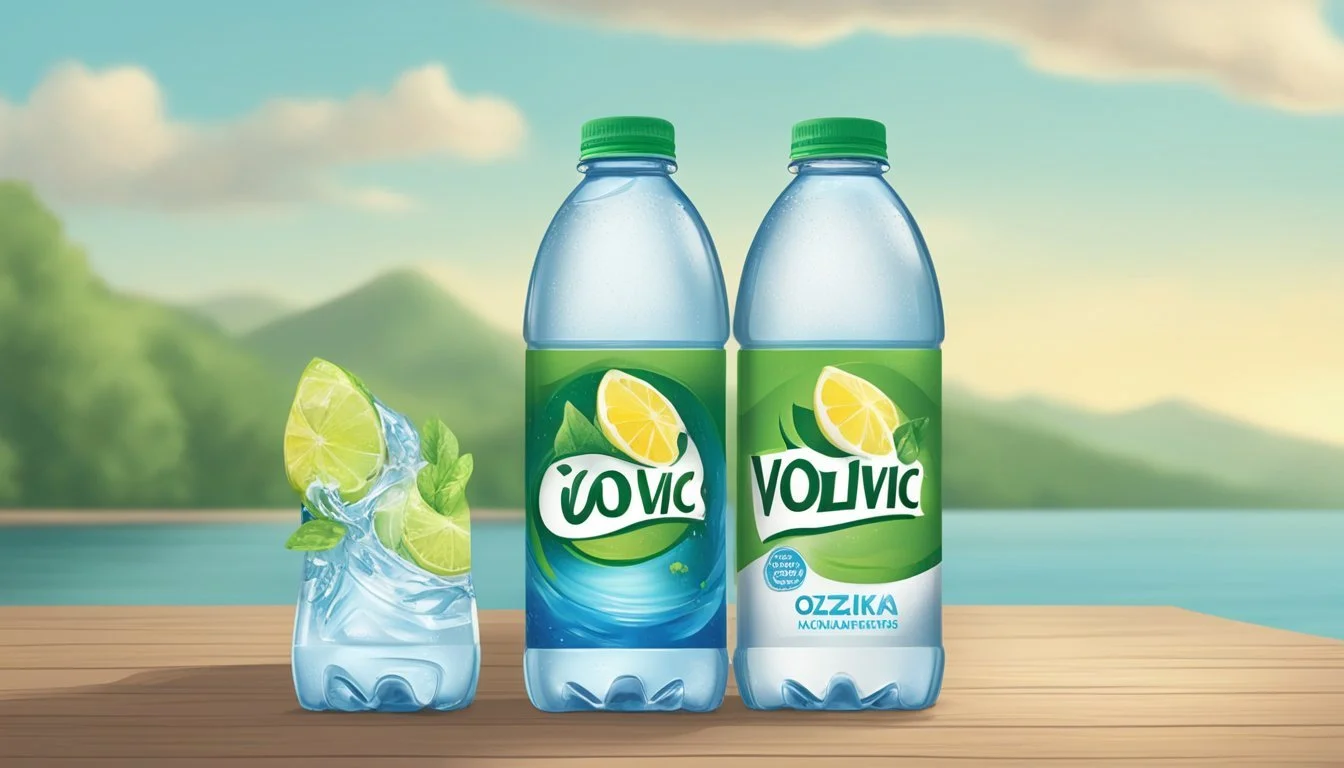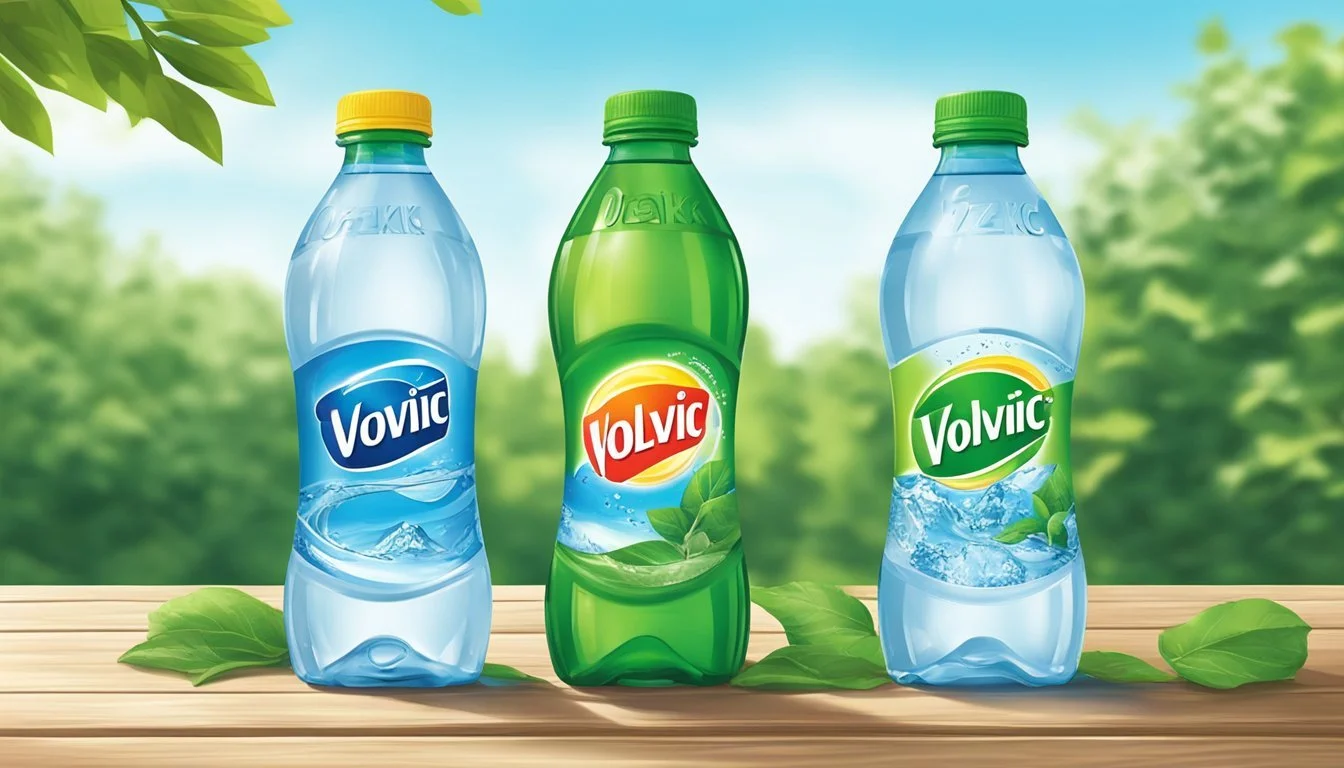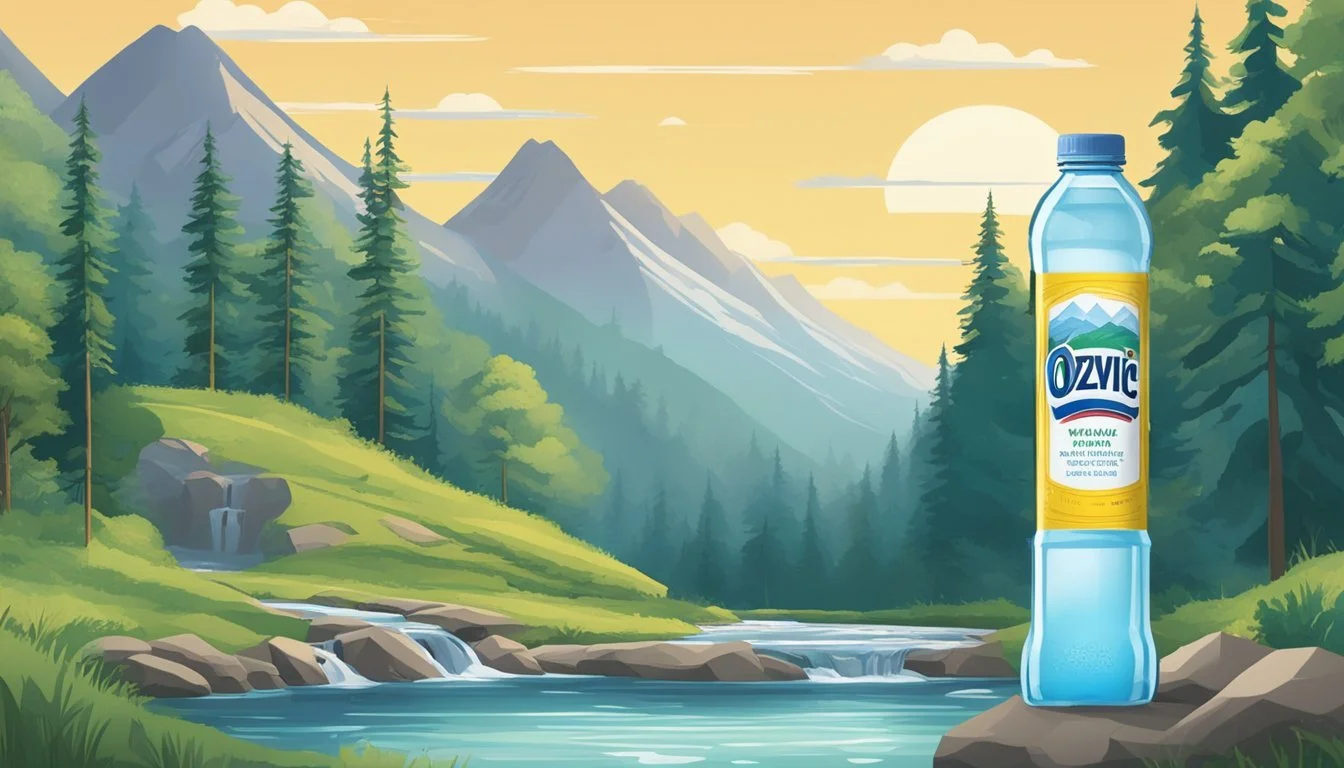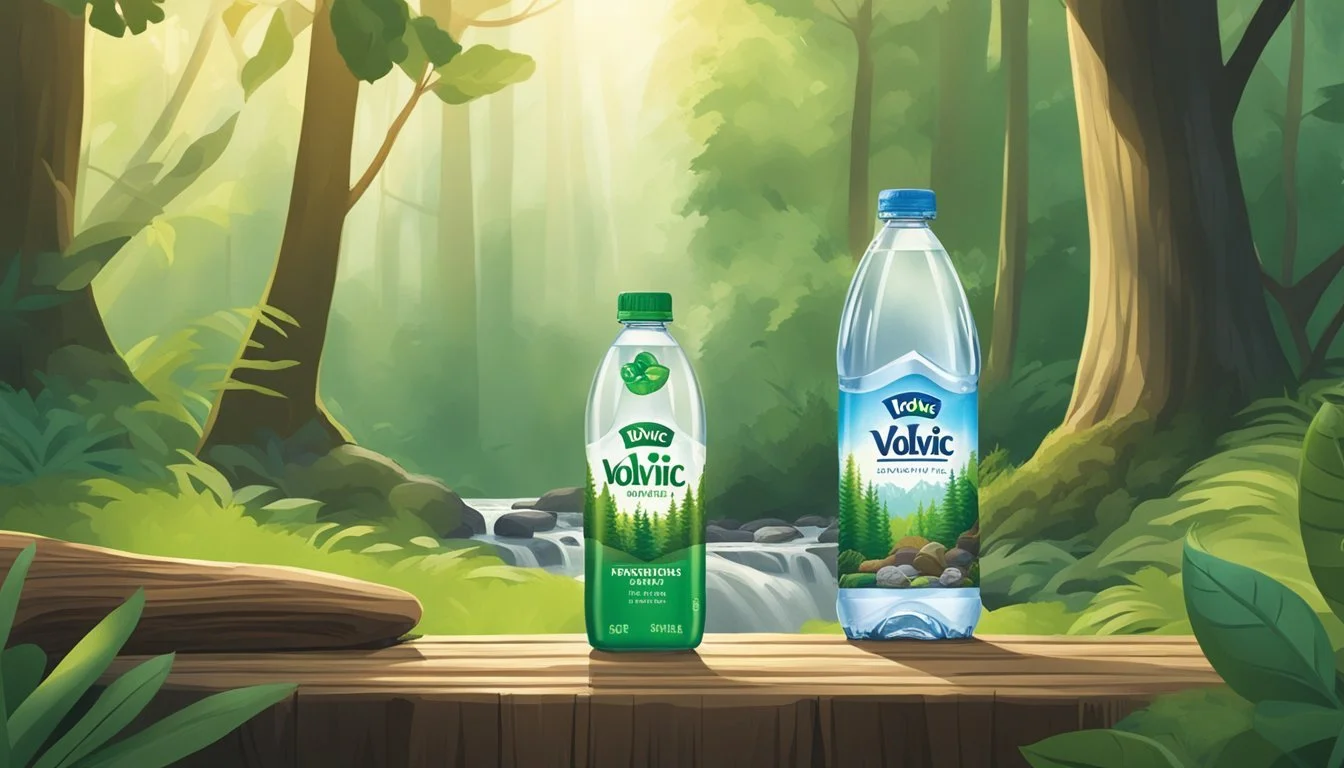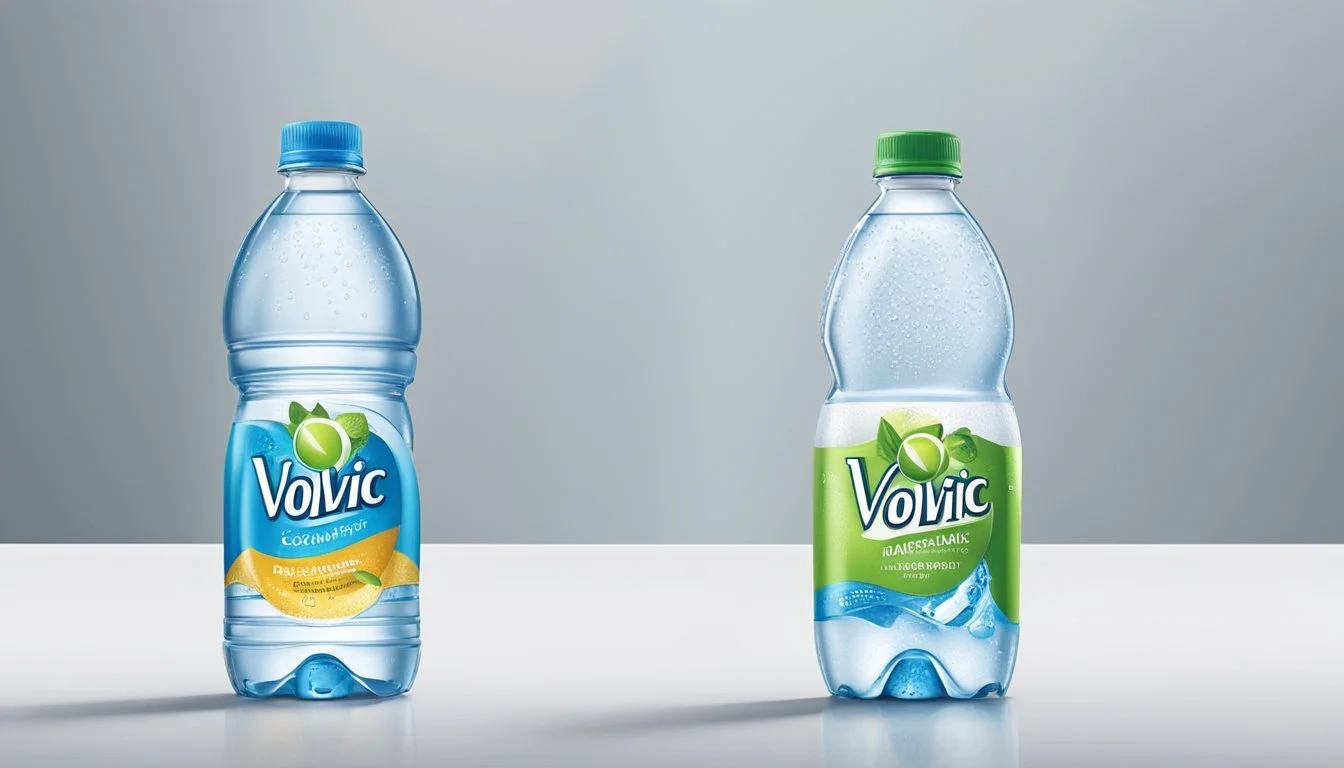Ozarka vs. Volvic
Comparing Quality and Taste in Bottled Water Brands
In the realm of bottled water, consumers are presented with a plethora of choices, each touting its own benefits and purity levels. Two brands that often come up in discussions of quality and taste are Ozarka and Volvic. Ozarka, sourced from springs in Texas, is a brand known for delivering a taste of the region's natural resources. Contrastingly, Volvic, derived from an ancient volcanic region in France, is recognized for its unique mineral composition and the filtration process it undergoes through volcanic rock.
Choosing between Ozarka and Volvic involves more than a simple taste preference; it includes consideration of the water's source, its mineral content, and the overall environmental impact of the product. Both brands claim environmental responsibility and health benefits, injecting their narratives into the marketing of their water. With consumers increasingly aware of the environmental implications of bottled water, both brands face the challenge of maintaining sustainability while providing pure, good-tasting water to their customers.
Understanding Bottled Water
In examining bottled waters like Ozarka and Volvic, it's essential to comprehend their classifications and the processes they undergo. Their characteristics and sources significantly influence the choice between different brands.
What is Bottled Water?
Bottled water refers to drinking water that has been packaged in plastic or glass bottles. It can come from a variety of sources, including springs, artesian wells, or municipal supplies. After extraction, the water undergoes filtration and can be enhanced through the addition of minerals. There are several types of bottled water:
Spring Water: Originates from an underground formation from which water flows naturally to the Earth's surface.
Mineral Water: It contains no less than 250 parts per million of total dissolved solids and comes from a source tapped at one or more boreholes or springs.
Purified Water: Processed to remove chemicals and contaminants and may come from any source, including spring, mineral, or tap water.
Alkaline Water: Water that has been ionized to increase its pH level, making it more alkaline as opposed to acidic.
Categories of Bottled Water
Consumers can choose from various categories of bottled water, based on processing and content, such as:
Natural Spring Water: Collected directly from a spring where water rises naturally to the surface.
Mineral Water: Characterized by its constant level and relative proportions of mineral and trace elements at the source.
Purified Water: Has been treated to remove impurities and contaminants. Methods include reverse osmosis, distillation, and deionization.
Alkaline Water: Enhanced with minerals to raise the pH level, which proponents claim can neutralize acid in the bloodstream.
The choice of Ozarka versus Volvic may depend on preference for the source and the specific processing it undergoes to meet quality and taste standards.
Branding and Market Presence
In the bottled water industry, branding and market presence are critical for consumer recognition and trust. The companies behind these brands invest substantially in marketing to establish a strong identity and widespread distribution.
Prominent Bottled Water Brands
Ozarka is notable for being sourced from Texas springs, and it presents itself as a natural and local choice for consumers in the region. Originating from France, Volvic conveys an image of volcanic purity and has a significant presence in the European market.
Competition in the bottled water market is intense, with numerous global and local brands vying for consumer attention. Nestlé Pure Life, a product of the world's largest bottled water corporation, Nestlé, is known for its international distribution network. Poland Spring, Deer Park, and Zephyrhills are brands that also fall under the Nestlé portfolio and are recognized for their regional sourcing and natural origins.
Evian and Fiji Water are premium brands that emphasize their natural sources and purity, with Evian being sourced from the French Alps and Fiji Water originating from an aquifer in Fiji. Dasani and Aquafina, owned by Coca-Cola and PepsiCo respectively, are household names whose market presence is bolstered by their parent companies' extensive distribution channels.
Smartwater, known for its added electrolytes and distinct branding, and Core Hydration, with its perfect pH balance, bring innovative branding strategies into the bottled water market. Brands such as Icelandic Glacial capture the market with their exotic and pure sources, while Acqua Panna distinguishes itself with its Tuscan heritage.
On the regional front, Arrowhead is a widely available brand in the United States, offering water sourced from mountain springs in the Western U.S. and Canada. Meanwhile, Deer Park tends to cater to consumers on the East Coast with its straightforward appeal of East Coast mountain spring water.
Health and Hydration
Selecting the right bottled water is critical for maintaining proper hydration and body health. Differences in mineral content and the presence of electrolytes can have significant implications for both.
Hydration and Body Health
Hydration is essential as it helps regulate body temperature, maintain blood pressure, and enable cellular function. Ozarka and Volvic water provide hydration, but the process through which they're purified differs. Ozarka often uses methods like reverse osmosis, which strips away most minerals and contaminants, whereas Volvic, sourced from a volcanic region in France, retains its natural mineral content. While both brands aid in hydration, Volvic's natural mineral profile is considered beneficial for health.
Minerals and Electrolytes
The mineral and electrolyte content in bottled water can affect taste, hydration efficacy, and overall health benefits. Here's a quick breakdown of the mineral content comparison between Ozarka and Volvic:
Mineral Ozarka (mg/L) Volvic (mg/L) Calcium Low 12 Magnesium Low 8 Potassium Low 6 Bicarbonates Low 74 Silica Low 32
Volvic water is naturally enriched with electrolytes and minerals from its volcanic source, which can contribute to better hydration and replenishment of minerals lost during physical activity. Conversely, Ozarka's lower mineral content may not provide the same level of electrolytes, but it still contributes to hydration. Brands like Essentia and Penta also include electrolytes in their water, often added after the purification process, providing enhanced hydration. In contrast, some consumers prefer brands like Pure Life or Voss for their distinct purification process and taste.
Taste Profiles
When comparing the taste profiles of Ozarka and Volvic bottled water, consumers often have distinct preferences that could be detected during taste tests. The mineral content and source of the water contribute to the flavor nuances that differentiate these brands.
Ozarka is a brand that sources its water from Texas springs. It is known for a taste that reflects its natural origin, often described as fresh and clean. Consumers might detect a balanced mineral taste due to the presence of elements like calcium and magnesium. During blind taste tests, individuals may appreciate Ozarka for its smoothness and a lack of any overpowering mineral aftertaste.
In contrast, Volvic is sourced from volcanic regions in France, which naturally filters the water through layers of volcanic rock. The trace minerals that it collects through this process, like silica, bicarbonates, and sulfates, contribute to a distinct taste that can be described as crisp and slightly earthy. Volvic may be perceived as having a more pronounced mineral profile, which tends to fare well in water taste tests, especially among those who prefer a strong mineral presence.
Brand Source Taste Description Mineral Notes Ozarka Texas springs Fresh, clean, smooth Balanced, subtle Volvic French volcanoes Crisp, earthy, pronounced minerals Silica, bicarbonates
Both brands provide a refreshing experience, but the preferred taste profile is subjectively determined by the consumer's palate and their affinity for certain mineral tastes. It's essential to consider that the perception of water taste can vary widely among individuals, with some preferring a more neutral taste and others enjoying a distinctive mineral flavor.
Sourcing and Purity
In comparing Ozarka and Volvic bottled waters, one must consider the origin of the water and the level of impurities present, which can influence both taste and healthfulness.
Water Sources
Ozarka: Ozarka's water is sourced from three springs in Texas, known to provide natural spring water. These sources include Roher Spring in Henderson County, Moffit Spring in Walker County, and Piney Woods Springs in Wood County. The water is heralded for its natural composition, being harvested from protected underground springs.
Volvic: Volvic water originates from a volcanic rock-filtered source in the Auvergne region of France, specifically fed by rainwater filtered through layers of volcanic rock in the Chaîne des Puys. This results in a very pure form of natural spring water drawn from an aquifer beneath the ancient volcanoes of the central French region.
Purity and Contaminants
Ozarka: Testing for purity, Ozarka adheres to federal and regional standards, ensuring that contaminants are kept to a minimum. The company emphasizes its thorough filtration process to eliminate impurities while maintaining the water's natural mineral content.
Volvic: Volvic takes pride in the purity of their water attributable to the filtration through volcanic rock, which naturally purifies the water and enriches it with minerals. The brand's testing procedures are stringent, aiming to ensure the absence of harmful contaminants and preservation of essential electrolytes.
Environmental Impact
Ozarka: The brand's use of groundwater from springs raises questions regarding sustainability and the impact on local ecosystems. Ozarka has engaged in initiatives to reduce its environmental footprint through packaging and promoting recycling.
Volvic: Volvic operates with an eye to environmental stewardship, emphasizing the minimal disturbance to the surrounding environment in the extraction of its water. The brand has committed to ecological responsibilities, including carbon offsetting and sustainable packaging efforts.
Manufacturing Processes
In the bottled water industry, the manufacturing processes are crucial to the quality of the final product. These processes can range from the initial water source filtration to the final stages of packaging. Here, we will examine the specific manufacturing techniques employed by Ozarka and Volvic, focusing on their filtration and purification methods as well as their bottling and packaging protocols.
Filtration and Purification
Ozarka
Ozarka's water is sourced from three different springs in Texas. The company employs a multi-step filtration process that includes hydro-7 purification, a method which asserts thorough removal of particles and contaminants. Additionally, Ozarka water undergoes carbon filtration, which effectively reduces certain organic compounds and chlorine, improving taste and odor.
Filtration: Ozarka's filtration includes:
Hydro-7 purification
Carbon filtered systems
Volvic Contrastingly, Volvic water originates from a volcanic region in France, filtered naturally through volcanic rock which adds minerals and provides a unique composition to the water. Volvic also applies reverse osmosis and ultraviolet light purification to ensure sterility and purity, complementing the natural filtration process.
Purification: Volvic's methods include:
Natural volcanic filtration
Reverse osmosis
Ultraviolet light treatment
Bottling and Packaging
Ozarka
Ozarka's packaging employs bottles made from BPA-free plastic, prioritizing consumer health. Ozone is utilized as a part of the sanitation process before the water is filled into bottles, ensuring maximum cleanliness without affecting the taste.
Volvic
Volvic emphasizes environmental responsibility by using recyclable materials and maintaining sustainable packaging practices. The brand is known for its iconic and durable plastic water bottles, which have been a subject of attention for maintaining product integrity during transportation and storage.
For both brands, the choice of materials and packaging methods are designed to safeguard the water quality until it reaches the consumer, while also considering environmental impact and consumer safety.
Water Quality and Safety Standards
When assessing the quality and safety of bottled water brands like Ozarka and Volvic, one must consider the regulatory guidelines and standards they adhere to. Ozarka originates from three springs in Texas and is compliant with both the Food and Drug Administration (FDA) regulations as well as the Environmental Protection Agency (EPA) standards, which oversee tap water quality.
Volvic, sourced from the Auvergne region of France, is under strict EU regulations ensuring it meets safety standards before it reaches consumers. Its quality reports are transparent, detailing the mineral content and absence of contaminants.
Water quality can also be measured by the presence of per- and polyfluoroalkyl substances (PFAS), which are man-made chemicals potentially harmful to health. While not all brands publish data on PFAS, consumers should expect their bottled water to have non-detectable levels of these chemicals.
FDA Regulations: Bottled water must comply with established quality standards, including limits on contaminants.
EPA Standards: For U.S. bottled water, EPA guidelines for public water sources serve as a benchmark for safety and quality.
Quality Reports: These reports provide consumers with information about the water’s source, treatment process, and mineral content.
PFAS Chemicals: Both Ozarka and Volvic aim to meet standards that limit the amount of PFAS in their bottled water.
It is important for consumers to review these standards and reports to ensure the bottled water they consume is of high quality and safe for consumption.
Consumer Experience
When selecting bottled water, consumers often weigh the convenience and accessibility of the product, as well as the clarity and extent of information presented on the labels. These aspects can significantly influence their decision-making process and overall satisfaction.
Convenience and Accessibility
Ozarka and Volvic are both prominent in the bottled water market, but their availability can vary greatly. Ozarka is largely distributed within the United States, with a particular focus on the southern states where it is sourced, making it a convenient option for consumers in that region. In contrast, Volvic is sourced from France and has a wide distribution network that spans across many countries, giving it a broader, though not always as readily accessible, presence.
Label Transparency and Information
Labels on bottled water can be a critical factor for consumers who are concerned about the quality and origin of the water they drink. Ozarka labels provide consumers with clear information about the water sources, which include three springs in Texas, giving consumers a sense of local sourcing. On the other hand, Volvic emphasizes its volcanic filtration process and international origins. The company provides specifics about the water's journey through six layers of volcanic rock which enriches the water with electrolytes and minerals.
Both brands adhere to regulatory requirements for bottled water labeling, ensuring that consumers receive essential information about the contents and source of the water they choose.
Environmental Considerations
When examining the environmental impact of bottled water brands such as Ozarka and Volvic, it is critical to assess their sustainability practices and the consequences of packaging waste. Both factors significantly contribute to the brands' overall environmental footprint.
Sustainability Practices
Ozarka, sourced from springs in Texas, is part of the Nestlé Waters family. Nestlé has implemented measures aimed at reducing their environmental impact, such as using renewable energy in their operations and managing water sources sustainably. They also participate in recycling initiatives and have committed to making 100% of their packaging recyclable or reusable by 2025.
Volvic, harvested from the Auvergne volcanic region in France, boasts of preserving the natural environment where it sources its water. The brand's parent company, Danone, has initiatives for protecting watersheds and reducing carbon footprint. Volvic aims to achieve carbon neutrality by balancing its emissions with carbon offset projects.
Packaging Waste
Ozarka:
Material Used: Mainly PET plastic for bottles, which is recyclable.
Recycling Initiatives: Promotes recycling among consumers; however, recycling rates remain low globally, contributing to plastic waste.
Volvic:
Material Used: Also uses PET plastic, which is recyclable.
Alternative Packaging: Introduced a “bio-based” bottle made from plant-based materials, which reduces reliance on fossil fuels.
Boxed Water: No significant information on boxed water initiatives by Volvic was found; their focus remains on recyclable plastic bottles.
Both brands contribute to packaging waste, but they actively seek to improve the environmental sustainability of their packaging. Neither brand is associated with Crystal Geyser Natural Alpine Spring Water; thus no direct comparison can be made regarding Crystal Geyser's environmental efforts. It's essential for consumers to note that while both Ozarka and Volvic are moving towards more sustainable practices, actual improvement depends not only on corporate action but also on consumer behavior regarding recycling and waste management.
Price and Affordability
When comparing Ozarka and Volvic bottled water, consumers often consider the price as a significant factor. Ozarka, known for sourcing its water from Texas springs, tends to be marketed as an economical choice. Its affordability is a reflection of its brand value, aiming to provide a decent quality of water without a hefty price tag. Available primarily in the Southern United States, Ozarka offers competitive pricing that aligns with budget-conscious consumers.
In contrast, Volvic water hails from the volcanic regions of France and possesses a unique mineral composition. The brand promotes not just hydration but also the holistic experience tied to its volcanic origin. Consequently, Volvic's pricing structure is positioned at a higher point compared to Ozarka. This can be attributed to its international import status and the brand’s emphasis on a rich mineral profile.
Here's a comparison of the costs associated with each brand:
Bottle Size Ozarka (Per Bottle) Volvic (Per Bottle) 500 ml $0.50 - $1.00 $1.50 - $2.50 1 Liter $1.00 - $1.50 $2.00 - $3.00 1.5 Liters $1.50 - $2.00 $2.50 - $4.00
Note: Prices may vary based on location and retailer.
Economic factors also play a role in the pricing of these brands. The cost of production, distribution, and branding all influence the final retail price. For consumers weighing their options, it's important to consider the balance between cost and the value provided by the water's origin and quality. While Ozarka delivers affordability, Volvic offers a different proposition with its mineral-rich volcanic water, justifying its higher cost.
Ozarka vs. Volvic: Comparative Analysis
In contrasting Ozarka Natural Spring Water with Volvic, it's essential to examine their sources, composition, and the impact on both flavor and brand perception. This analysis compares the two brands in these key areas.
Source and Composition
Ozarka derives its water from several natural springs in Texas, priding itself on a regional heritage that emphasizes the purity and natural qualities of its product. The water is said to filter through ancient, mineral-rich rock formations which contribute to its composition and flavor.
Volvic, on the other hand, sources its water from the volcanic region of Auvergne in France. The water is naturally filtered through six layers of volcanic rock, which imparts a unique mineral profile and is deemed responsible for the water's purported purity and its slight mineral taste.
Flavor and Quality Assessment
When it comes to taste, some consumers describe Ozarka as having a crisp and refreshing profile, whereas Volvic is often noted for a distinctive taste that can be attributed to its volcanic filtration process.
The quality of both brands generally receives positive feedback. However, precise palatability can be subjective and varies based on individual preference for certain mineral scales and the resulting mouthfeel.
Brand Reputation and Trust
Ozarka boasts strong regional loyalty, particularly in Texas, where the brand is a household name. Its labels play on this local connection, bolstering consumer trust through familiar imagery and branding.
Volvic enjoys international recognition, in part due to the exotic appeal of its volcanic source. The brand is associated with a certain French purity standard that resonates with consumers looking for water with a story behind its source.
Price and Value for Money
The price of both Ozarka and Volvic fluctuates based on bottle size, quantity, and point of sale. Generally, Volvic, being an imported product, may command a higher price in markets outside of Europe when compared to Ozarka.
In terms of value, consumers often weigh the cost against the perceived quality and brand reputation. It is not uncommon for individuals to prefer one brand over the other based on their budget and taste preference.
Environmental Stances
Ozarka has made efforts to address environmental concerns by offering bottles made from recycled materials and promoting recycling initiatives. Still, the sustainability of bottled water is a hot topic affecting the brand's image.
Volvic has similarly undertaken initiatives to reduce its carbon footprint and increase sustainability, emphasizing the use of recycled petrochemical materials in its bottles and investing in carbon offset programs.
By considering these specific attributes of Ozarka and Volvic, consumers can make informed decisions based on their personal preferences for source, taste, brand reputation, cost, and environmental impact.
Conclusion
In comparing Ozarka and Volvic, consumers find distinct qualities that may sway their preference towards one brand over the other.
Summary of Key Points
Ozarka: Sourced from Texas springs, Ozarka's natural mineral composition provides a smooth taste but can vary in mineral content due to its multiple spring sources.
Volvic: Originating from a volcanic region in France, Volvic is known for its consistent mineral balance and clean taste, attributed to the unique filtration through volcanic rocks.
Final Recommendations
For those favoring a bold mineral taste and supporting local sources within the United States, Ozarka is a preferred choice. Conversely, consumers seeking water with international acclaim for consistent quality and volcanic filtration may opt for Volvic.
While neither brand tops the lists as the best bottled water, each holds its own; they are not at the bottom either, suggesting individual preference plays a significant role in determination. Brands like Life Wtr exemplify innovative packaging and artful branding, whereas Refreshe offers a budget-friendly alternative without compromising on quality.

